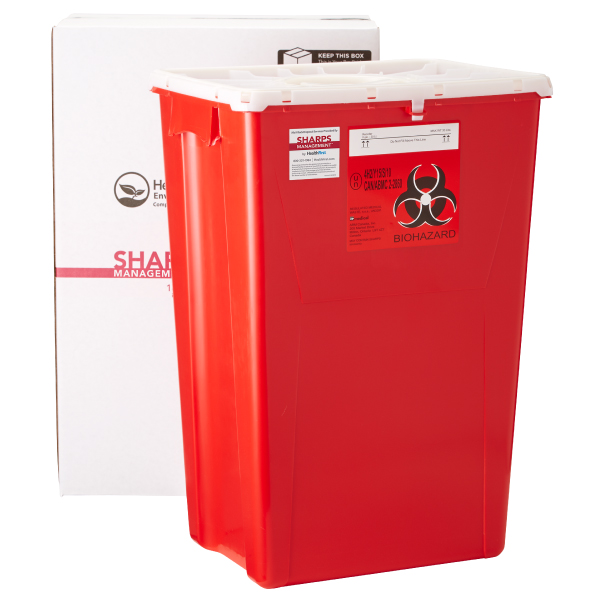Regional Commitment: Your Area's Leading Medical Waste Removal Near Me
Exploring Various Garbage Disposal Options for a Cleaner Atmosphere
In the pursuit of a cleaner environment, the management of waste disposal has actually emerged as an important focal point for lasting development. With a multitude of waste disposal options offered, varying from standard garbage dump approaches to innovative waste-to-energy modern technologies, the option of how we manage our waste has far-ranging ramifications for our world's health.
Recycling Methods
Carrying out reliable reusing methods is important in minimizing waste and promoting sustainability in our setting. Recycling involves the procedure of transforming waste materials right into reusable objects to prevent unneeded disposal. Among one of the most typical recycling techniques is material recovery, where products like paper, plastic, glass, and steel are collected, arranged, and refined to create new items. This procedure not just conserves natural deposits but likewise decreases power intake and greenhouse gas exhausts connected with creating new products from the ground up.
One more crucial recycling method is composting, which entails disintegrating natural waste like food scraps and lawn trimmings right into nutrient-rich dirt. This process not only diverts organic waste from land fills yet likewise creates a useful resource for horticulture and agriculture. Additionally, upcycling is an imaginative recycling method that involves transforming old or discarded products into products of better or value. By integrating these various recycling methods into our waste administration methods, we can substantially minimize our environmental footprint and move in the direction of a much more sustainable future.

Composting Techniques
Efficient waste administration techniques, such as reusing approaches, pave the way for a cleaner atmosphere, and currently, moving the focus to 'Composting Techniques', we explore sustainable methods to disintegrate natural waste for ecological advantage. medical waste disposal.
Composting is a natural procedure that changes natural waste, like food scraps and backyard trimmings, into a nutrient-rich soil amendment. The secret to successful composting hinges on developing the appropriate balance of green materials, such as vegetables and fruit scraps, and brownish products, like dried out fallen leaves and branches. These materials disintegrate with the aid of microbes, damaging down the waste right into useful garden compost.
There are numerous composting techniques available to fit different demands. Typical yard composting includes layering natural materials in a bin or heap and routinely transforming the mixture to aerate it. Vermicomposting, on the other hand, makes use of worms to break down organic issue right into compost (click here). For those with limited space, indoor composting systems offer a convenient option. By using composting strategies, we can reduce the amount of waste sent out to land fills while developing an advantageous item for enhancing dirt and supporting plant growth.
Incineration Cons and pros
Incineration, as a waste disposal technique, presents both benefits and negative aspects that merit cautious factor to consider in the world of lasting waste administration techniques. On the positive side, incineration can substantially reduce the volume of waste, decreasing the need for landfill space and possibly decreasing greenhouse gas emissions.
Furthermore, the high first investment and operational prices of incineration centers position economic difficulties, making it a less cost-effective choice contrasted to other waste administration strategies. Cautious monitoring and guideline are necessary to mitigate these unfavorable influences and optimize the benefits of incineration as component of a comprehensive waste monitoring technique.
Garbage Dump Monitoring Techniques
Land fills play a vital role in waste management and ecological preservation by providing a control system for the disposal of strong waste products. By compacting the waste, the volume is lowered, allowing for more waste to be accommodated over time.
Furthermore, the execution of daily cover practices is essential in minimizing odors, stopping clutter, and reducing the destination of pests. Covering the disposed waste at the end of every day assists to contain odors and avoid prospective environmental contamination. In addition, the monitoring of landfill gas discharges and leachate degrees is crucial in making sure that environmental standards are satisfied which any type of prospective risks to bordering ecosystems are decreased.

Waste-to-Energy Technologies
Among the ingenious techniques to squander administration includes harnessing Waste-to-Energy innovations to transform strong waste right into usable power sources. Waste-to-Energy (WtE) technologies include a series of procedures that aim to extract power from waste products via thermal, chemical, or organic methods. This conversion procedure not just minimizes the volume of waste that winds up in landfills however likewise produces important energy sources such as electrical power, heat, or biofuels.
Incineration involves shedding waste at high temperatures to produce warm and electricity. Gasification transforms you could check here waste into a syngas, which can be made use of for power generation or chemical production.
Executing Waste-to-Energy modern technologies can assist mitigate environmental problems related to conventional garbage disposal techniques while simultaneously offering a sustainable power resource. Nevertheless, cautious consideration must be offered to emissions control and making certain the sustainability of feedstock supplies for these technologies to be genuinely useful for a cleaner setting.

Conclusion
In verdict, discovering various waste disposal choices such as reusing, composting, incineration, landfill monitoring, and waste-to-energy innovations is essential for advertising a cleaner atmosphere - click here. Each approach has its own benefits and difficulties, however by using a combination of these techniques, we can function towards decreasing the quantity of waste that ends up in land fills and eventually contribute to a much more lasting future for generations to find
With a multitude of waste disposal options offered, ranging from standard landfill methods to cutting-edge waste-to-energy technologies, the choice of exactly how we manage our waste has far-ranging ramifications for our world's wellness. medical waste removal service.Incineration, as a waste disposal approach, provides both benefits and downsides that merit cautious factor to consider in the world of sustainable waste administration methods.Land fills play a vital function in waste management and environmental conservation by supplying a containment system for the disposal of solid waste materials. By condensing the waste, the volume is minimized, allowing for more waste to be suited over time
One of the ingenious methods to lose administration includes taking advantage of Waste-to-Energy technologies to convert solid waste right into usable power sources.